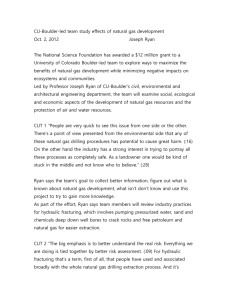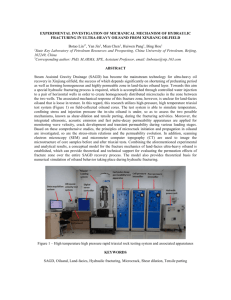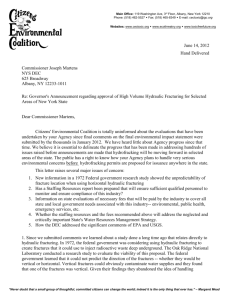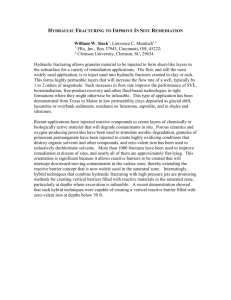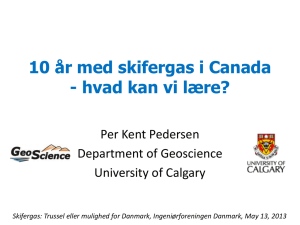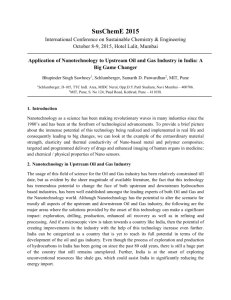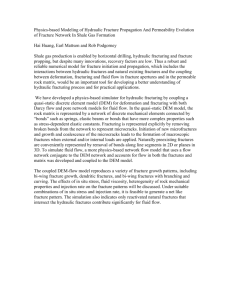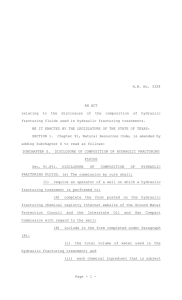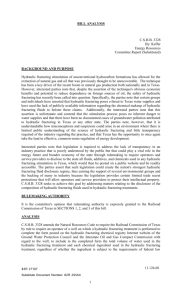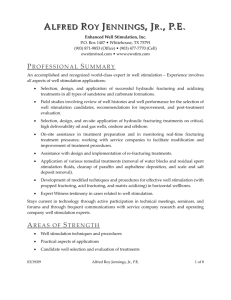INSTRUCTIONS TO AUTHORS FOR THE PREPARATION
advertisement
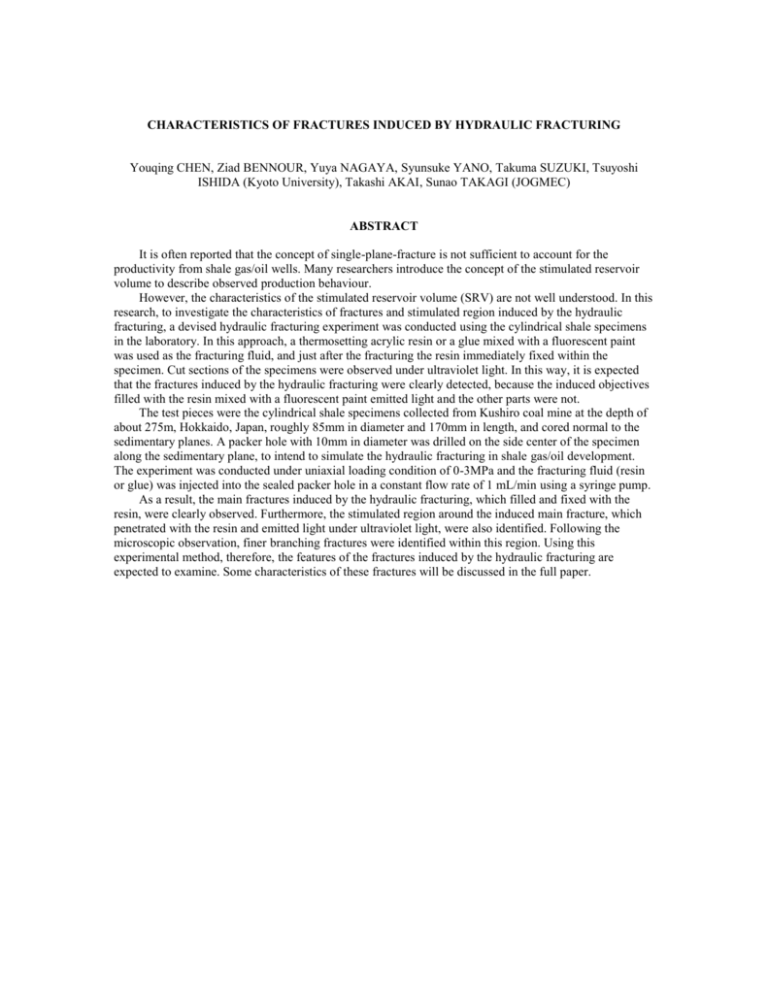
CHARACTERISTICS OF FRACTURES INDUCED BY HYDRAULIC FRACTURING Youqing CHEN, Ziad BENNOUR, Yuya NAGAYA, Syunsuke YANO, Takuma SUZUKI, Tsuyoshi ISHIDA (Kyoto University), Takashi AKAI, Sunao TAKAGI (JOGMEC) ABSTRACT It is often reported that the concept of single-plane-fracture is not sufficient to account for the productivity from shale gas/oil wells. Many researchers introduce the concept of the stimulated reservoir volume to describe observed production behaviour. However, the characteristics of the stimulated reservoir volume (SRV) are not well understood. In this research, to investigate the characteristics of fractures and stimulated region induced by the hydraulic fracturing, a devised hydraulic fracturing experiment was conducted using the cylindrical shale specimens in the laboratory. In this approach, a thermosetting acrylic resin or a glue mixed with a fluorescent paint was used as the fracturing fluid, and just after the fracturing the resin immediately fixed within the specimen. Cut sections of the specimens were observed under ultraviolet light. In this way, it is expected that the fractures induced by the hydraulic fracturing were clearly detected, because the induced objectives filled with the resin mixed with a fluorescent paint emitted light and the other parts were not. The test pieces were the cylindrical shale specimens collected from Kushiro coal mine at the depth of about 275m, Hokkaido, Japan, roughly 85mm in diameter and 170mm in length, and cored normal to the sedimentary planes. A packer hole with 10mm in diameter was drilled on the side center of the specimen along the sedimentary plane, to intend to simulate the hydraulic fracturing in shale gas/oil development. The experiment was conducted under uniaxial loading condition of 0-3MPa and the fracturing fluid (resin or glue) was injected into the sealed packer hole in a constant flow rate of 1 mL/min using a syringe pump. As a result, the main fractures induced by the hydraulic fracturing, which filled and fixed with the resin, were clearly observed. Furthermore, the stimulated region around the induced main fracture, which penetrated with the resin and emitted light under ultraviolet light, were also identified. Following the microscopic observation, finer branching fractures were identified within this region. Using this experimental method, therefore, the features of the fractures induced by the hydraulic fracturing are expected to examine. Some characteristics of these fractures will be discussed in the full paper. Figure 1 – Observation of the fracture induced by the hydraulic fracturing experiment using the glue mixed with a fluorescent paint under UV light. KEYWORDS Hydraulic fracturing, Single-plane-fracture, Stimulated reservoir volume (SRV), Laboratory test, Shale, Observation
